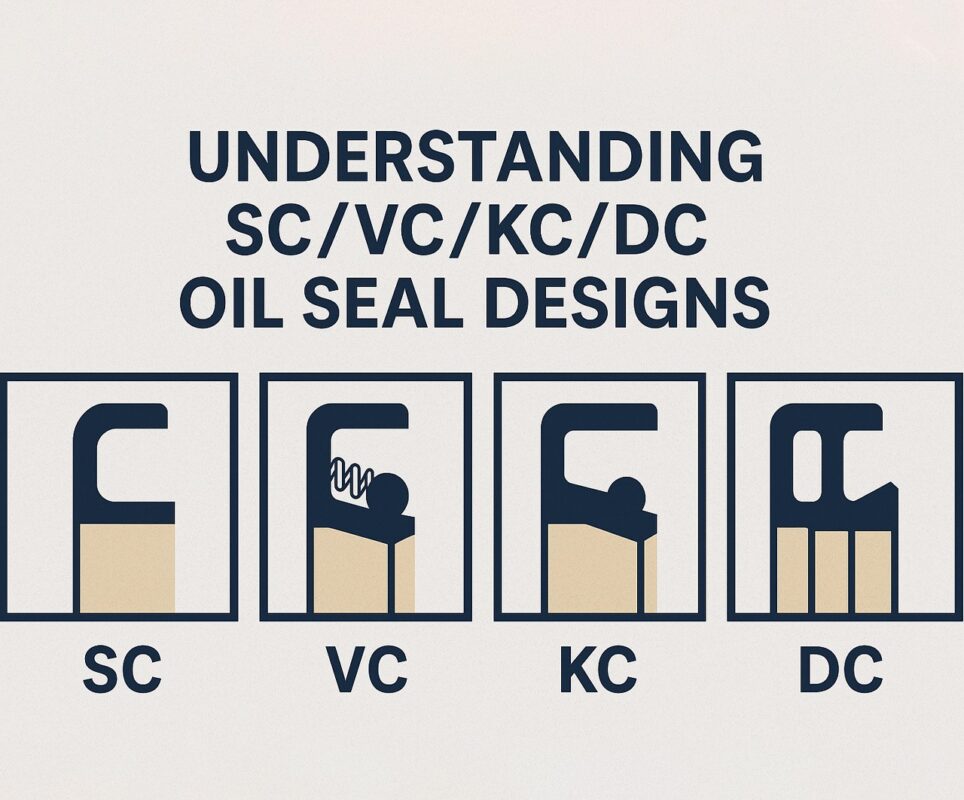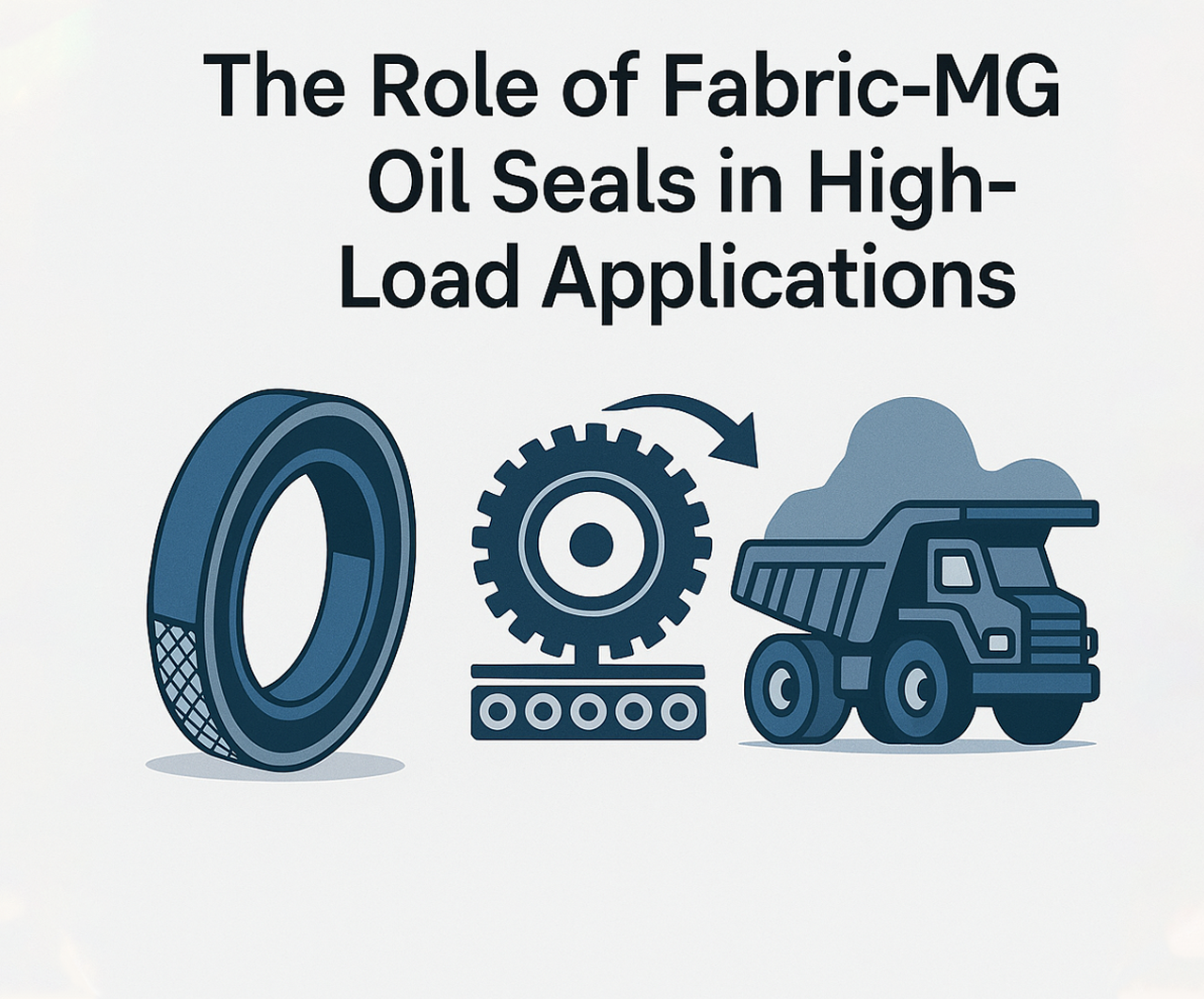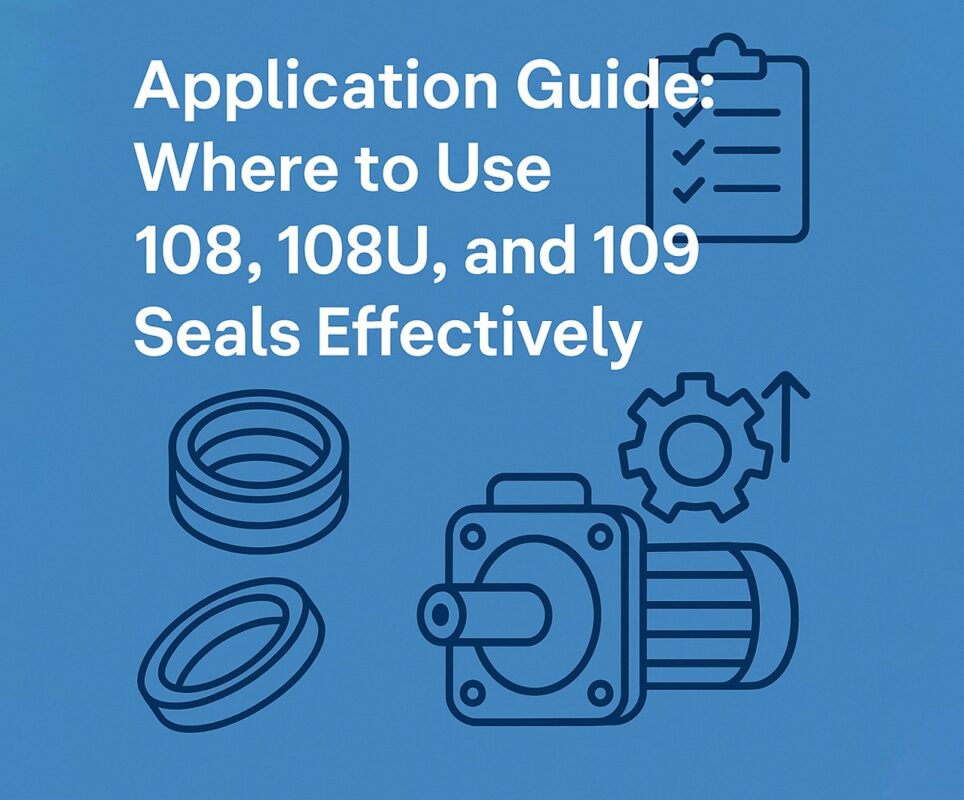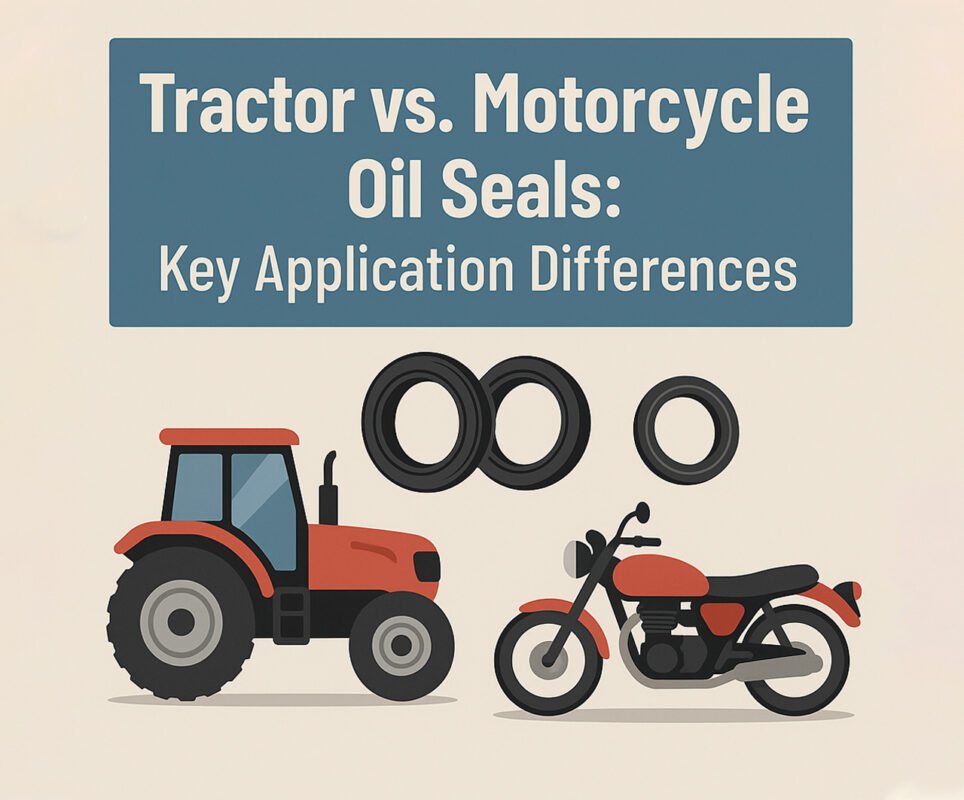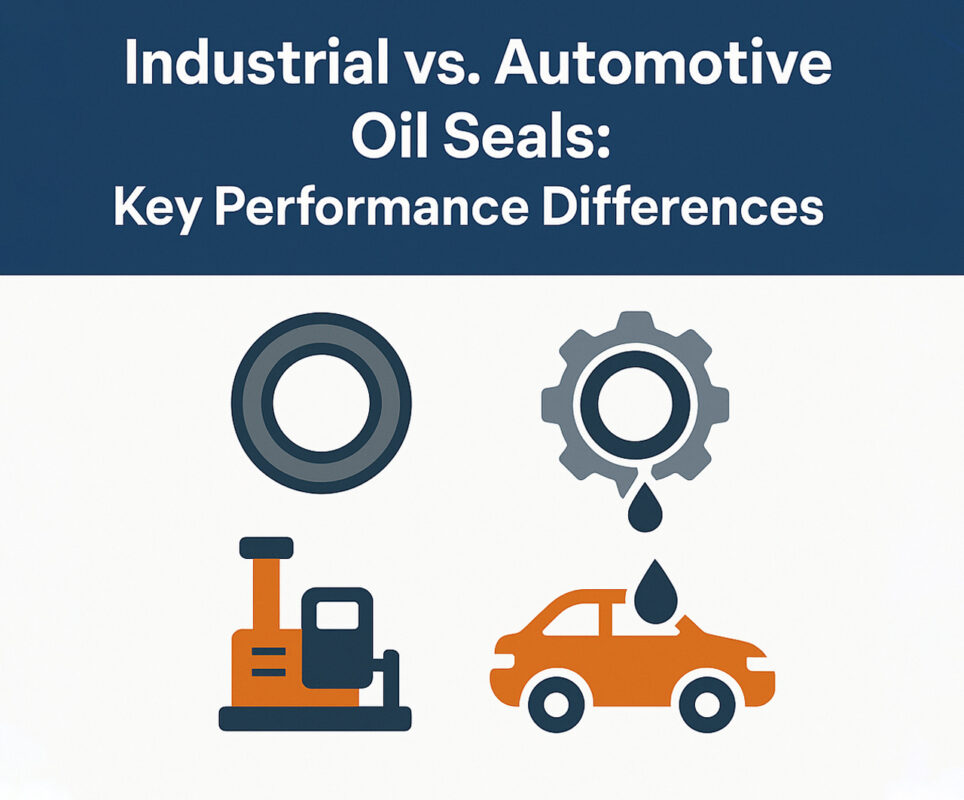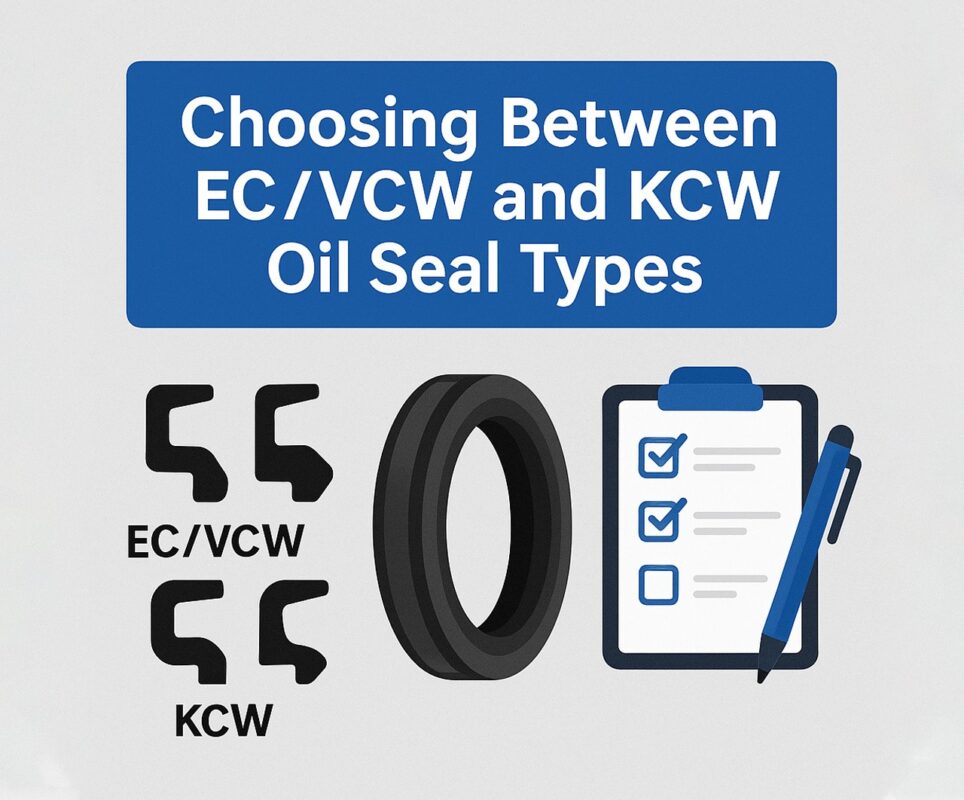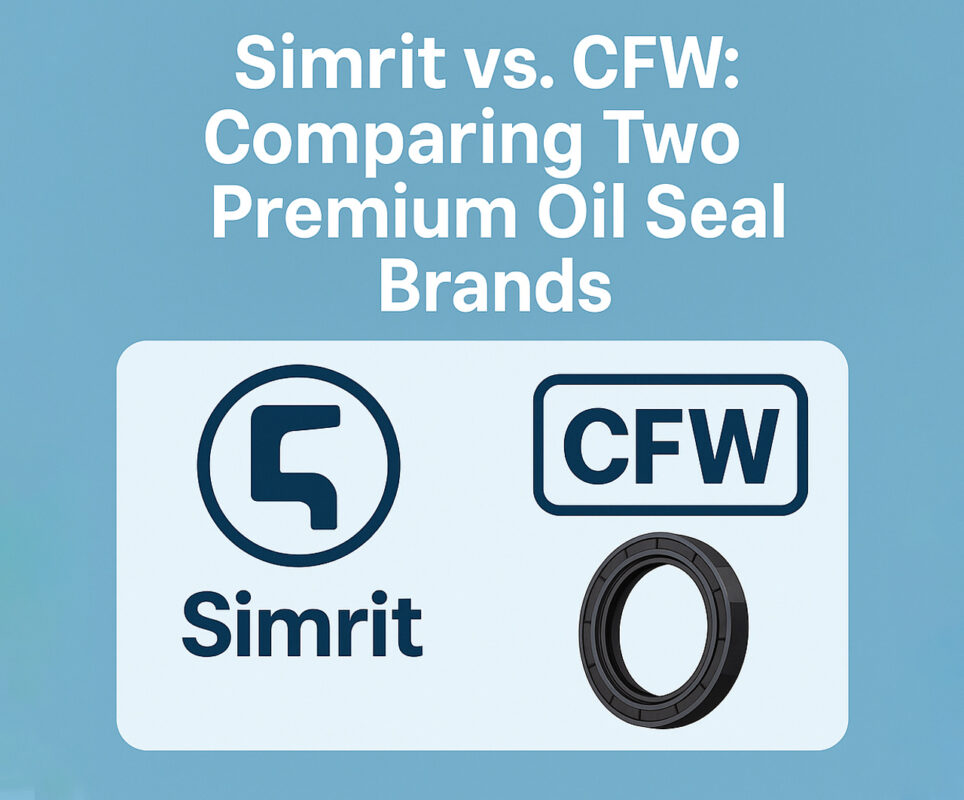When maintaining or upgrading a vehicle’s powertrain, understanding the components that keep fluids contained and systems running smoothly is critical. Two of the most essential—but often overlooked—sealing components are the oil crankshaft seal and the drive shaft gearbox seal, both of which contribute to the efficiency and longevity of your engine and transmission. In fact, if you’ve ever dealt with a leak, there’s a good chance the culprit was an oil seal in gearbox or crankshaft area. These tiny parts do a massive job—and knowing how they differ and when to replace them is key for any buyer or DIY mechanic. Gearbox oil seals are especially important to monitor, as wear or damage can quickly lead to transmission issues.
In this article, we explore the design, function, materials, and performance differences between oil seals used in crankshafts and gearboxes, helping buyers make smart, confident decisions. Know more..
What Is an Oil Crankshaft Seal?
The oil crankshaft seal, also called the front or rear main seal depending on its position, prevents engine oil from leaking where the crankshaft exits the engine block. It’s vital for maintaining oil pressure and protecting surrounding components from contamination.
Key Characteristics:
- Located at the front or rear of the crankshaft
- Made of synthetic rubber, PTFE (Teflon), or a blend with metal reinforcements
- Withstands high temperatures, oil immersion, and vibration
This seal ensures your engine doesn’t lose oil through the rotating crankshaft—a major factor in long-term engine health.
What Is a Drive Shaft Gearbox Seal?
A drive shaft gearbox seal, on the other hand, seals the area where the drive shaft enters or exits the gearbox or differential. Its job is to retain transmission fluid or gear oil while allowing rotational motion.
Key Characteristics:
- Typically mounted at the output shaft of the gearbox
- Works with transmission or differential oil
- Seals against a rotating shaft and often exposed to environmental contaminants
The oil seal in gearbox systems must endure high rotational speeds, fluid pressure, and exposure to road debris—making durability crucial.
Key Differences Between Oil Crankshaft and Gearbox Seals
Let’s break down their differences in more detail:
1. Function & Location
- Oil crankshaft seals keep motor oil in the engine and contaminants out, operating at engine RPMs.
- Drive shaft gearbox seal and oil seal in gearbox designs deal with transmission or gear oil, sealing the output/input of gear systems.
2. Material Requirements
- Crankshaft seals often handle higher thermal stress and chemical exposure due to proximity to combustion.
- Gearbox seals prioritize mechanical stress endurance and resilience to gear oil additives.
3. Failure Modes
- Crankshaft seal failures often cause oil leaks on the engine’s front or rear—visible as puddles or oil spray under the hood.
- Gearbox seal failures result in low transmission fluid levels, hard shifting, or noise from the transmission.
Common Causes of Oil Seal Failure
Whether it’s the oil crankshaft seal or a drive shaft gearbox seal, several issues can lead to seal failure:
- Age and Wear: Rubber hardens or cracks over time.
- Heat: High temperatures can warp or shrink seals.
- Contamination: Dirt or metal shavings can degrade seal edges.
- Installation Errors: Misaligned shafts or over-tightened bolts cause uneven pressure.
A worn oil seal in gearbox may even allow transmission oil to leak into the driveshaft tunnel or undercarriage.
How to Identify a Failing Seal
Here are a few red flags to watch for:
Oil Crankshaft Seal:
- Oil leaks near the bottom of the engine
- Burning oil smell
- Low oil levels despite no apparent consumption
- Visible residue around the crank pulley or flywheel
Gearbox Seal:
- Transmission fluid leaks around drive shafts
- Grinding noises or slipping gears
- Difficulty shifting
- Oil splatter around the rear of the engine bay or under the vehicle
Early detection is crucial since neglected seal failures can lead to major mechanical damage.
Replacement Considerations: What Buyers Should Know
When shopping for replacements, keep these points in mind:
1. OEM vs. Aftermarket
- OEM seals ensure compatibility but may be more expensive.
- Aftermarket seals can offer better materials or availability—just verify size and spec.
2. Material Choices
- For oil crankshaft applications, look for seals with high-heat resistance like Viton or PTFE.
- For drive shaft gearbox seal, nitrile rubber is standard, but silicone or polyurethane might offer better lifespan.
3. Size Precision
- Always measure with calipers or consult your vehicle’s manual. A poorly fitting oil seal in gearbox is just as bad as a broken one.
4. Tool Requirements
- Some seals require pullers or special installation tools to avoid damaging new parts during installation.
Innovations in Oil Seal Technology
Today’s seals are evolving with automotive needs:
- Dual-Lip Seals: Enhance protection by using one lip for oil retention and another to keep dirt out.
- Self-lubricating Materials: Some oil crankshaft seals now include embedded lubricants to reduce wear during startup.
- Smart Seals: Under development, these could one day monitor temperature, pressure, or vibration data.
These upgrades aim to extend the life of both oil seal in gearbox and crankshaft applications.
DIY vs. Professional Installation
While some car owners are skilled enough to replace these seals themselves, it’s a nuanced job:
Crankshaft Seal Replacement:
- Often involves removing major components like the timing belt or transmission
- Not ideal for beginners
Gearbox Seal Replacement:
- Typically requires lifting the vehicle and disconnecting the driveshaft
- Moderate difficulty—still may require a mechanic for accurate alignment
Improper replacement can result in repeated leaks or worse—catastrophic failure. When in doubt, consult a professional.
Environmental and Safety Considerations
Leaking seals don’t just hurt your car—they impact the environment too.
- Engine oil leaks can harm wildlife and waterways.
- Gear oil from a drive shaft gearbox seal is highly toxic to marine life.
- Worn seals can lead to fire hazards if hot engine parts ignite spilled oil.
Always clean up leaks and dispose of used oil and components responsibly.
Preventive Maintenance: Keep Seals in Shape
To extend the life of your seals:
- Use high-quality oil and fluids: Cheap oil can degrade rubber faster.
- Inspect seals during every oil change: Look for early signs of wear.
- Avoid overfilling: Excess pressure can force oil past seals.
- Watch your driving: Aggressive driving increases thermal and mechanical stress.
A well-maintained oil crankshaft seal and oil seal in gearbox should last for years—but only with proper care.
Conclusion
Choosing between an oil crankshaft seal and a drive shaft gearbox seal isn’t about preference—it’s about purpose. Each has its role in ensuring your vehicle operates safely, cleanly, and efficiently. By understanding their functions, differences, and warning signs, buyers can make informed choices that save time, money, and effort down the road.
So next time you’re under the hood or in the parts aisle, give those little seals the credit they deserve—they might just be the most important parts you never think about.
Need help identifying the right seal for your car? Reach out to your parts specialist or drop your questions in the comments—we’re here to help!


